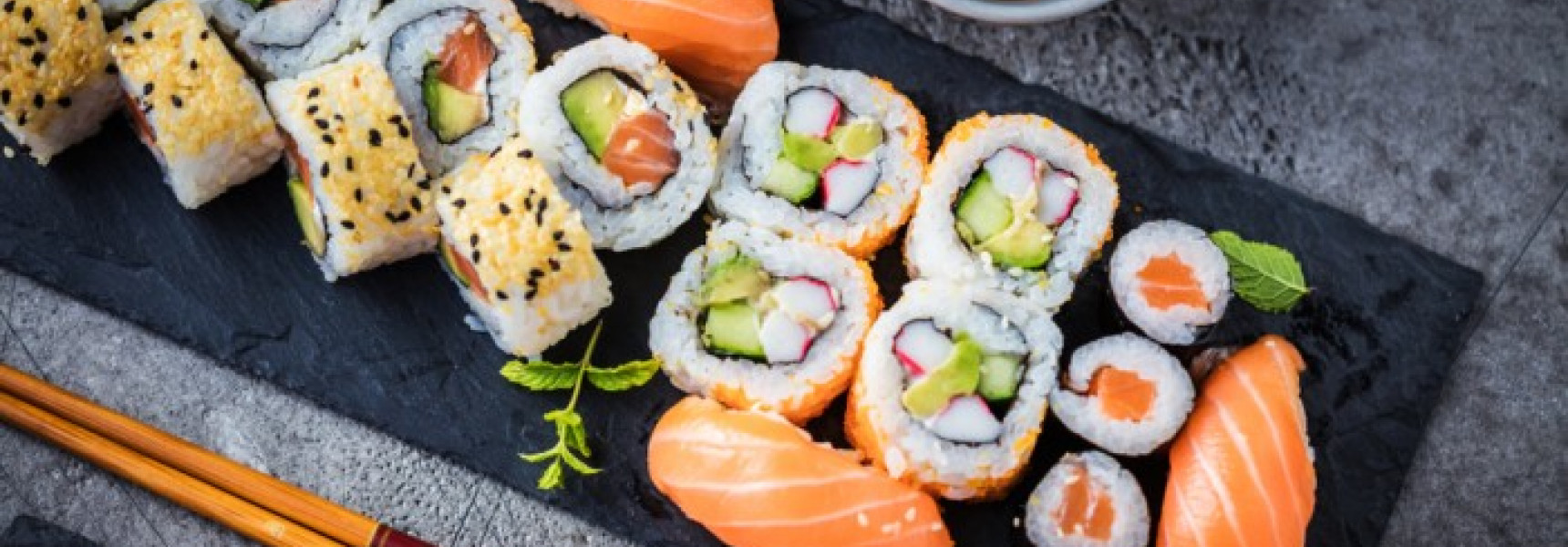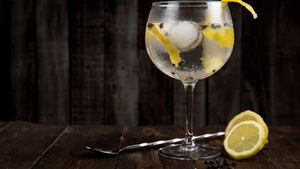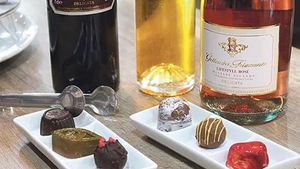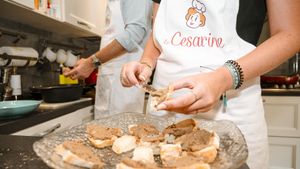Published: 14 Jun 2022
Sushi is considered a form of fine art in Japanese culture. Its physical beauty being matched only by its deliciousness when done correctly. Some masters of the craft have spent decades refining their technique, learning how to perfectly combine flavour, colour and texture to create culinary artworks. Some of whom have gone to open cooking classes and run online lessons.
Sushi transcends the status of a mere food item, as an ancient cultural icon of the Island of Japan, it even has its own legends attached to it. The truly worthy itamae-san (honoured chef) should be able to create nigirizushi in which all of the rice grains face the same direction, so the legend goes.
With growing Japanese expat populations existing worldwide, the popularity of sushi has exploded over the years and now people from all walks of life have been lucky enough to enjoy this famous delicacy.

Sushi Restaurants
Countless restaurants have popped up in an attempt to capitalise on the world’s insatiable demand for this wonderful food, but this has resulted in a departure from its cultural origins.
You can even get so-called sushi as part of a meal deal at a corner shop! This has caused many people to forget that sushi is, in fact, a fine art.
On the other hand, it has caused a desire in people to remember this fact, and people worldwide are searching for that authentic experience - a true taste of the Japanese culinary legacy.
Hence the rise in food tourism in recent years. In a world where everything is commodified, even national dishes, people desire more than ever to rediscover the real thing - not the product that resembles the thing, with all its sophistication removed.
Food and drink experiences
With the unprecedented access to worldwide travel that the modern age allows, accompanied by our ability to capture experiences on our phones and share them far and wide on social media, food and drink experiences are constantly rising in popularity.
As we scroll through social media and are faced with all the delightful delicacies that people are enjoying from around the world, it makes us hungry to experience them for ourselves.
When it comes to sushi, this desire is magnified because the difference between genuine Japanese sushi and the ‘California roll’, for example, is night and day.
This creates an itch that is near impossible to scratch because authentic sushi is desired, but you can only find sushi imitations that just don’t, quite, cut it.
The California roll - a distinctly American version of sushi and an invention that emerged in the ‘60s to satisfy the western palate - replaces expensive tuna with the fatty taste of avocado and places the rice on the outside.
Authentic Japanese sushi wraps the nori around the outside of the roll and uses only the freshest fish that doesn’t come dripping in condiments because the flavours don’t need to be masked.
Real Japanese sushi artists will use the freshest fish available on the market, often tailoring their menu in accordance with the catch of the day. This allows them to create a delicacy that tastes beautifully fresh, clean and subtle, sometimes with a dab of wasabi or a drip of soy sauce to enhance the flavour.
Experts in food and drink experiences can easily tell the difference between flash-frozen sushi and the real McCoy - both may be delicious, but if sushi is what your heart desires, there is no substitute for the real thing.

Authentic Japanese Sushi
A genuine sushi experience with a real sushi artist would look something like this:
The artist would traditionally use only four ingredients, which are rice, rice vinegar, seaweed and fresh raw fish or vegetables.
The measure of the artist’s skill is determined by the way these ingredients are brought together to create something beautiful and delicious.
Etiquette is also important in the authentic sushi experience; for example, the wasabi would not be served on the side as it is in the west because the sushi is considered to be a perfectly balanced artwork in the eyes of its creator.
Only pickled ginger would be served alongside the sushi, which is for cleansing the palate between servings.
The taste of fresh Sushi
Chefs then design a menu in accordance with the freshest fish available at the market. It is not uncommon for the customer at a real sushi restaurant to be able to see the chef in the kitchen with the ingredients on show and witness them display impressive culinary talents and knife skills characteristic of Japanese chefs.
The sushi itself would contain extremely fresh fish of some variety, often one that had been both caught and killed in the same day - this is called sushi-grade fish, meaning it is so fresh and clean that it is not only safe but healthy to consume raw.
The fish would be the colour that matches its natural flesh. Tuna, for example, has a natural maroon hue, while salmon is pinkish-orange in its natural state.
Then there's the taste, oh the taste...
Nothing gives it away more obviously than the brilliant sophistication of flavour combination, with the meat of the fish perfectly complemented by the lightly fragranced rice.
There is something intensely satisfying about the clean, natural and simple, yet fascinatingly delicious nature of sushi.
It is truly the way to experience food the way it should be, with all the additives found in sushi imitations stripped away, only the real thing remains - and it is wonderful.
How can I experience real sushi?
Many promise real sushi, few deliver.
If you are looking for an authentic sushi food and drink experience, check out Tabl. today. Our directory contains the best food experiences, wine tours, and culinary events worldwide, selected by passionate experts.
To experience the art of sushi the way it was intended, book a culinary experience with us today and we promise to take you on a journey to the heart of Japanese culture and cuisine, where history comes alive through a culinary legacy that stretches back to the 8th century and culminates on your plate.
Search tabl. for classes delving into the art of making sushi, along with food tours and experiences in Japan and across the world.

Keep exploring...
Find more amazing tabl. experiences to visit

























